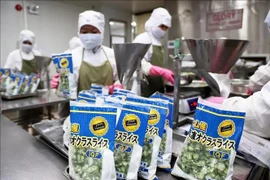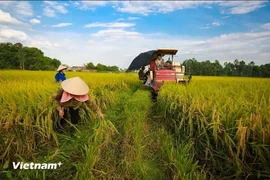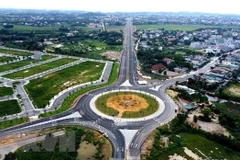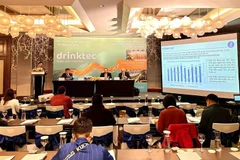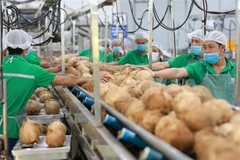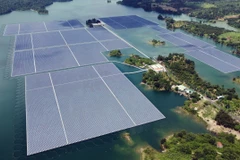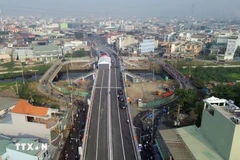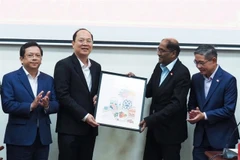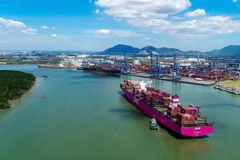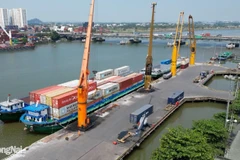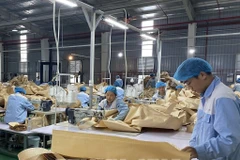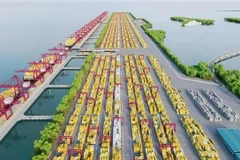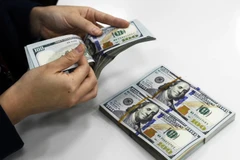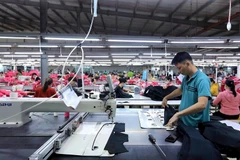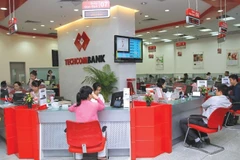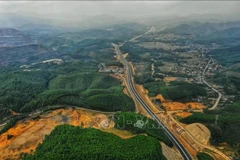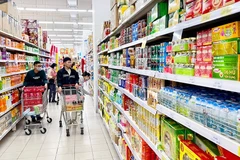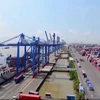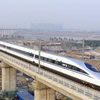Hanoi (VNA) – Vietnam’s agricultural sector saw record-breaking growth in 2024, with key exports such as rice, coffee, durian, and dragon fruit gaining traction in highly selective markets like the EU and the US. As a pillar of the economy, agriculture continued to improve living conditions of people nationwide.
On the occasion of the Lunar New Year, VietnamPlus spoke with Minister of Agriculture and Rural Development Le Minh Hoan about the sector’s achievements and its strategy for sustainable development.

– Reporter: Despite the severe impact of Super Typhoon Yagi and subsequent flooding, the agricultural sector still posted strong growth in 2024. What were the key factors behind this success?
Minister Le Minh Hoan: The resilience of farmers was at the heart of our success. Every achievement in agriculture is built on the hard work of millions of farmers and thousands of businesses. Our role, as the Ministry of Agriculture and Rural Development, is to foster stronger connections within the production chain.
A key driver of this year’s growth was the proactive shift from traditional agricultural production to a market-oriented agricultural economy. This transformation is now deeply ingrained at the local level, where farmers understand that production must align with market demands.

Beyond production, localities have actively engaged in connecting with markets. In 2024, trade fairs were held across the country, from Son La, Hung Yen, and Hai Duong provinces to the Central Highlands and Southeast regions, helping to ease distribution bottlenecks. Information from key ministries and trade promotion agencies has also been swiftly relayed to farmers, ensuring that they stay updated.
Agriculture is no longer just about production and trade, it has evolved into a demand-driven industry. The principle is clear: we must sell what the market needs, not just what we can produce.
Vietnam’s agricultural export revenue reached 62.5 billion USD in 2024, driven by a well-connected ecosystem involving ministries, local administrations, industry associations, and farmers. By diversifying our markets, we have reduced reliance on any single export destination.

– Reporter: What strategies will the agricultural sector adopt to further expand Vietnam’s presence in global markets, Minister?
Minister Le Minh Hoan: While 2024 was a strong year for exports, market risks remain. We could unlock even greater value if all stakeholders, from farmers to enterprises, worked more closely together.
Businesses and farmers must work together to build strong brands for Vietnamese agricultural products. We need to reinforce Vietnam’s image as a country with a rich rice civilisation and a thriving agricultural sector.
– Reporter: Several agricultural products have surpassed 1 billion USD in export revenue. What opportunities exist to further enhance the value of Vietnamese agricultural goods?
Minister Le Minh Hoan: Vietnam’s agricultural sector has vast untapped potential. Circular agriculture, for example, remains in its early stages.
We still focus mainly on raw exports while overlooking byproducts. Take rice, for instance, while we export vast quantities in raw form, its byproducts, such as husks, stalks, and roots, could be used to produce fertilisers and other value-added products.

Similarly, we utilise only 2% of coffee’s value for beverages, while 98% of coffee waste is discarded. However, coffee grounds can be used to produce hydroponic growing media, soil conditioners, and even cosmetics. Many countries have adopted circular farming models, using coffee waste to grow mushrooms or converting post-harvest residues into animal feed.
To enhance export value, we must transition from selling raw products to processed goods. In 2024, Vietnam signed a protocol with China to export frozen and processed agricultural products - an opportunity to multiply product value tenfold or even hundredfold.

– Reporter: 2025 marks the final year of implementing the national development goals set by the 13th National Party Congress. What are the key objectives for the agricultural sector moving forward, Minister?
Minister Le Minh Hoan: The agricultural sector has already surpassed its targets for the 2021-2025 period, but we must now accelerate growth. The key question is: how do we fully leverage our existing strengths?
Every agricultural product holds multiple layers of value such as food, medicinal ingredients, pharmaceuticals, and cosmetics. Focusing solely on raw exports limits our potential. Moving forward, Vietnam must explore multi-layered value chains, similar to the advanced processing techniques used in the Republic of Korea and Japan.
With 33 million hectares of land and 100 million hectares of sea, we must also look outward. Joint farming ventures with Laos, Cambodia, and even African nations could open new opportunities.
Networking and embracing circular production principles will be key to seizing new growth opportunities.

Vietnam’s agriculture sector is set for a transformative year in 2025, embracing the theme “Flexible Adaptation - Unlocking Resources - Accelerating Breakthroughs” to navigate challenges, drive sustainable growth, and enhance the global standing of its agricultural products.
– Reporter: Thank you very much for your interview!.
